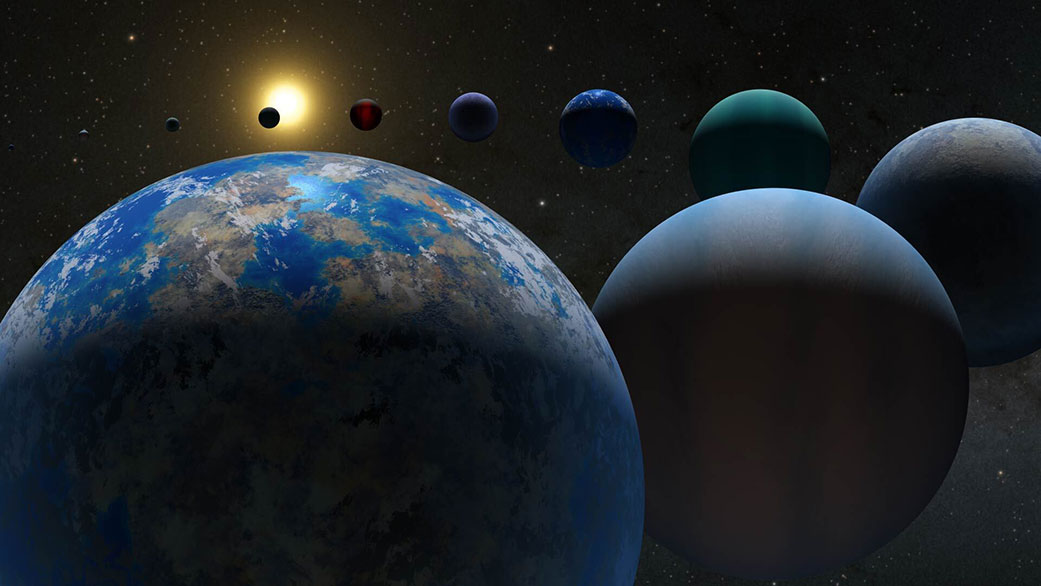Vega C Successfully Returns to Flight
Published on December 6, 2024

The Vega C successfully launched an Earth observation satellite on December 5, marking the rocket’s first flight since a failure nearly two years ago. The launch took place from the European spaceport at Kourou, French Guiana, at 4:20 p.m. Eastern Time. Initially scheduled for December 4, the launch was delayed by a day due to a problem with the mobile launch gantry at the pad.
Launch Details and Performance
The Vega C's three solid-fuel lower stages performed as expected, followed by three burns from the liquid-propellant AVUM+ upper stage. This upper stage deployed its payload, the Sentinel-1C satellite, approximately one hour and 45 minutes after liftoff.
This launch is particularly significant as it represents the first for the Vega C since a failure in December 2022, which destroyed two Pléiades Neo imaging satellites. The failure was attributed to the nozzle of the Zefiro-40 motor in the rocket’s second stage. To address this, Avio, the prime contractor for the Vega C, initially replaced the carbon-carbon material in the nozzle. However, the nozzle failed during a June 2023 static-fire test, requiring a redesign.
Successful Redesign
The redesigned motor successfully completed two static-fire tests in May and October, providing Avio, launch services company Arianespace, and the European Space Agency (ESA) with the confidence needed to proceed with the launch.
Payload Overview
The Sentinel-1C, which was launched by the Vega C, is a radar imaging satellite developed by Thales Alenia Space for the Copernicus program of Earth observation missions managed by ESA in conjunction with the European Commission. It replaces the Sentinel-1B spacecraft, which experienced a malfunction in orbit nearly three years ago. Sentinel-1C joins the aging Sentinel-1A satellite and introduces new capabilities to monitor maritime traffic through the incorporation of an Automatic Identification System (AIS) receiver.
“One moment combined two great European achievements today: the third launch of a Sentinel-1 satellite and the third launch of Vega C, marking a triumphant return to form for both flagship European projects,” stated ESA Director General Josef Aschbacher following the launch.
European Launcher Crisis
The return to flight of Vega C is especially crucial in light of its previous failure, which, coupled with the retirement of the Ariane 5 and delays surrounding the Ariane 6, formed what many have referred to as a “launcher crisis” in Europe. This situation forced ESA and the EU to rely on SpaceX for Falcon 9 launches of vital science and navigation spacecraft.
“Today’s launch marks a crucial step forward, reaffirming European independent access to space,” proclaimed Toni Tolker-Nielsen, ESA’s director of space transportation, in a post-launch statement. “With Vega C back in flight and the inaugural launch of Ariane 6 in July, we are in a great place going forward.”
Future Launches and Expectations
Looking ahead, four Vega C launches are planned for 2025, which will be the final ones conducted by Arianespace, as the responsibility for the rocket’s launches will transition to Avio, which is already in charge of the rocket's sales and marketing.
“We are once again proud to contribute to the European Copernicus program and more broadly to maintaining independent access to space for Europe through our launchers,” Avio's chief executive, Giulio Ranzo, commented. “With Vega C, we are prepared to deliver our customers’ payloads to orbit with a projected increase in launch cadence for the upcoming years.”
The recent success of the Vega C, alongside the initial launch of the Ariane 6 which experienced a malfunction that prevented the upper stage from executing a final deorbit burn, is adding momentum towards increasing flight rates in Europe. A second Ariane 6 launch was originally scheduled for later this year, but it has now been postponed until mid-February 2025. However, Arianespace has assured that this delay will not impact the schedules of future launches, with an anticipated six Ariane 6 launches in 2025.
Conclusion
"Following this success and that of the inaugural flight of Ariane 6,” said Stéphane Israël, chief executive of Arianespace, “Arianespace is preparing for a high level of activity in 2025.” This statement highlights the ongoing recovery and revitalization of Europe’s launcher capabilities amidst a rapidly evolving global context in space exploration and operation.
As a point of comparison, it is noteworthy that SpaceX has already conducted over 120 launches of its Falcon 9 and Falcon Heavy rockets this year alone, contrasting sharply with Europe's current activity level.
Related Articles
- Vega C Fails on Second Launch
- Redesigned Vega C Motor Passes Static-Fire Test
- Next Ariane 6 Launch Slips to Early 2025
For more information, refer to SpaceNews.








